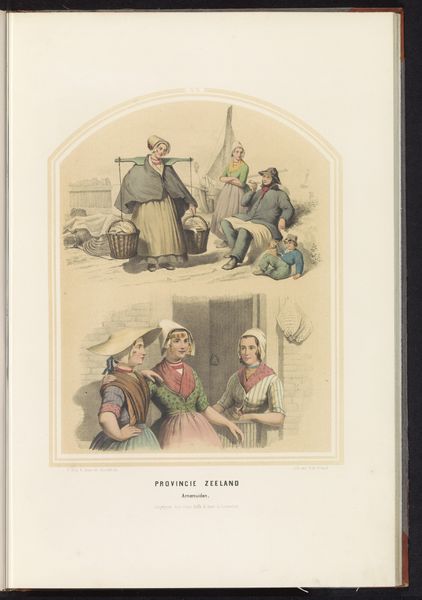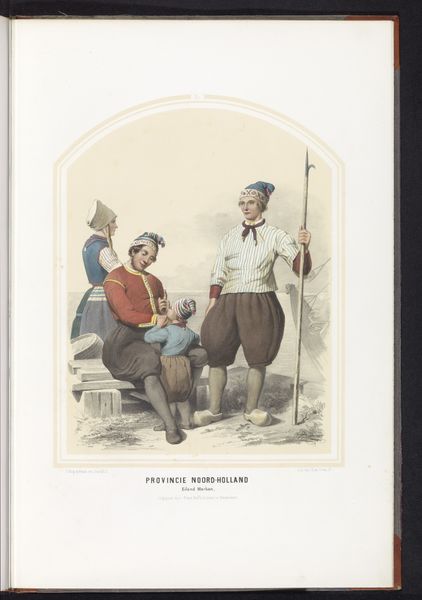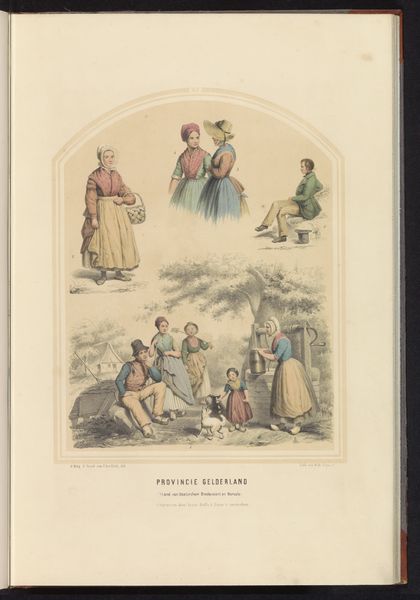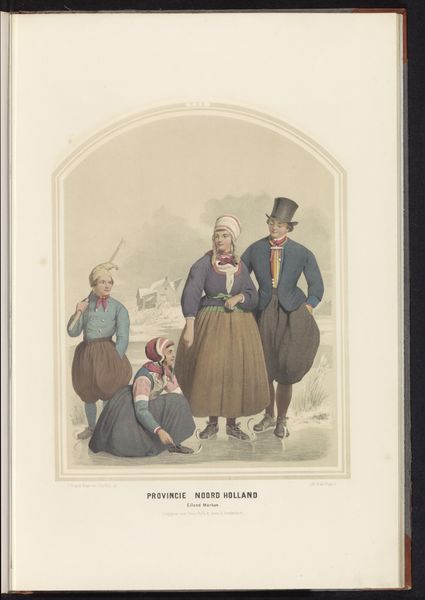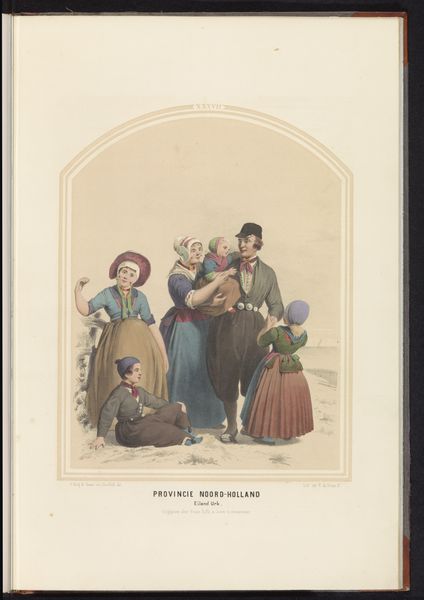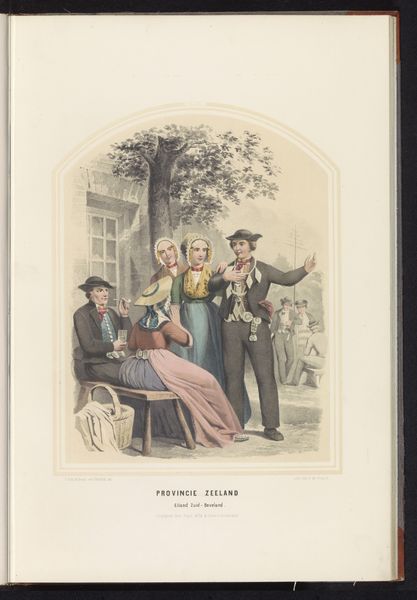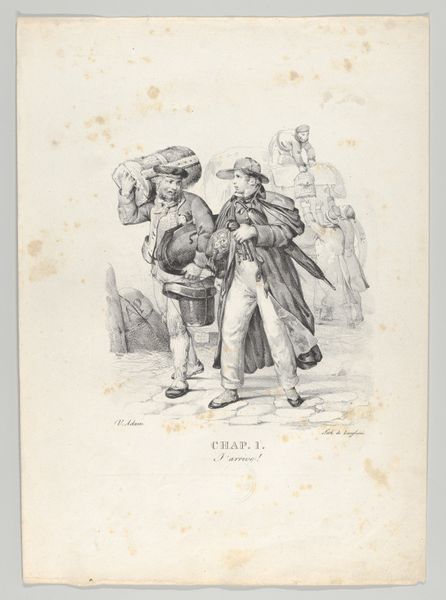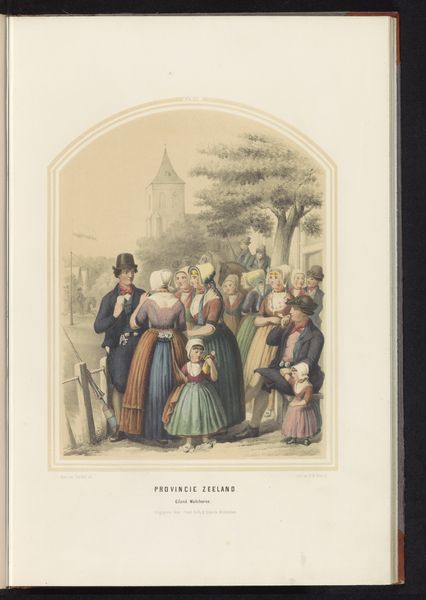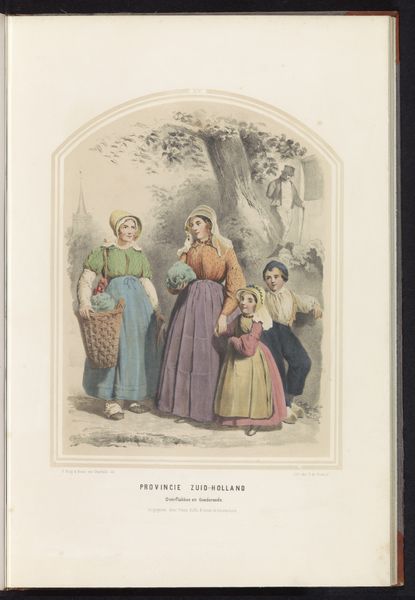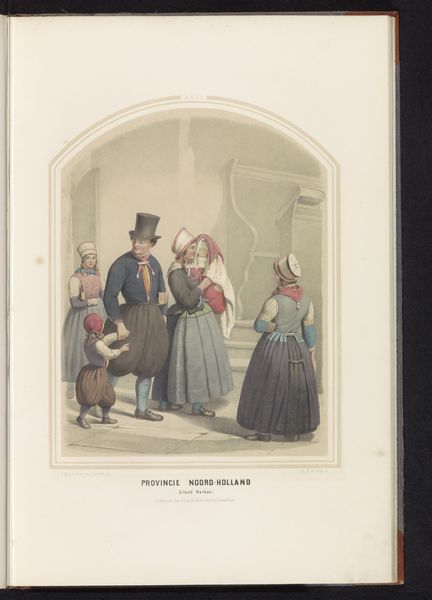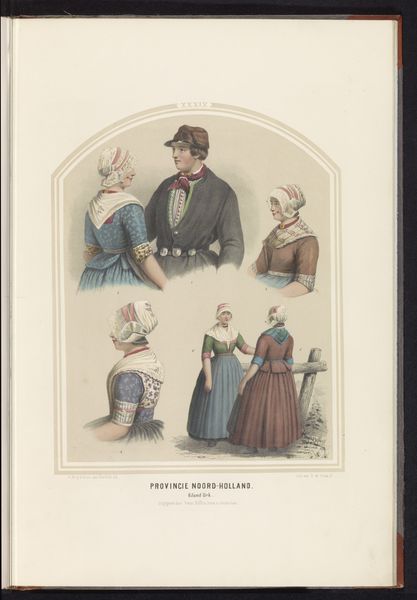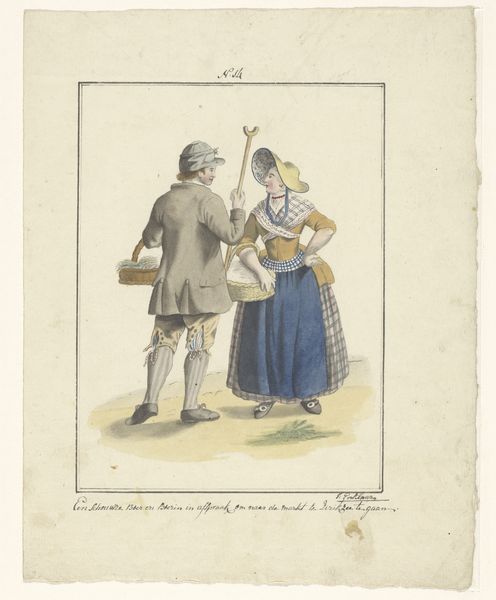
Dimensions: height 523 mm, width 350 mm
Copyright: Rijks Museum: Open Domain
Curator: Looking at this gentle illustration immediately evokes a sense of nostalgia. The composition is so carefully arranged, leading the eye from the figures to the distant seascape. Editor: That's "Klederdracht van Noord-Beveland in Zeeland, 1857," housed here at the Rijksmuseum. It showcases traditional garments worn in North Beveland, Zeeland, rendered delicately with watercolour and colored pencil. What strikes me is the tangible link it provides to 19th-century Dutch society and its crafts. Curator: Precisely! The way the light falls on the crisp white bonnets, the textures created with watercolor, and the subtle layering of colours--it's all designed to create an idealized image. Notice how their positioning guides your gaze towards that tiny boat out on the water. Editor: Let's consider those bonnets. Each one painstakingly constructed and uniquely adorned. It prompts thoughts about the artisanal production, the labor behind them, and their symbolic weight within a social and economic framework. Were they locally sourced? Passed down through families? Curator: Undoubtedly, each element conveys a deeper social meaning. Yet, formal choices remain crucial: The figures' careful placement within an arched frame, evoking a classical painting and lending the everyday scene a sense of timelessness and nobility. And see how they converge to one side, seemingly pushed out, opening out a path for you. Editor: While recognizing the classical undertones, can't we also acknowledge how the watercolour illustrations might have served to propagate ideals of regional identity during a period of increasing industrialization? These works affirmed certain modes of production while perhaps obscuring others. Who made the paper it was drawn on, how much would the dye used in these clothes cost etc? Curator: I can concede that it gives an identity, yes. But regardless of this being commercial, political or made simply for aesthetics, it evokes sentiments of gentle calm, inviting the viewer into a specific time and place through a sophisticated arrangement of figures and light. Editor: So in closing, it prompts questions regarding cultural memory and historical depiction when seen through a material and production lens. Curator: Absolutely. By engaging in form and societal context, we can discover new ways of perceiving art and engaging with our rich, multi-layered past.
Comments
No comments
Be the first to comment and join the conversation on the ultimate creative platform.
